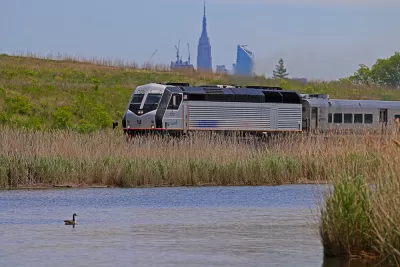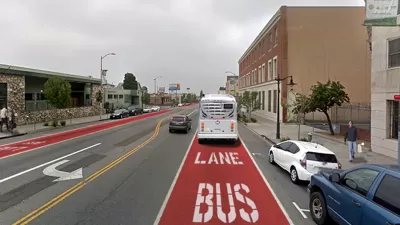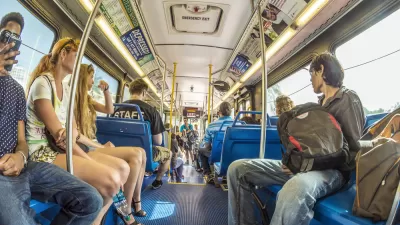U.S. commuter rail systems, primarily designed to bring workers to and from central business districts, must adapt to serve a broader population as the traditional workday changes.

"The future of America’s commuter rail model, including its heavy staff levels, is in doubt because of COVID-19," writes Jake Blumgart in Governing. "U.S. regional rail systems," which "have long been oriented toward suburban white-collar commuters," suffered massive revenue losses as commuting slowed to a trickle. "In the long term, it is projected that remote work will remain much more common, even after the pandemic eases. That means the core demographic for commuter rail could either continue to work from home or only come into the office a few days per week."
To adapt, commuter rail systems have started adding more frequent non-peak hour service and greater frequencies, but agencies are hindered by high labor and infrastructure costs. "One of the biggest is inefficiently allocated labor costs. American commuter rail systems operate on an antiquated model, employing not just engineers who drive the train but multiple conductors who punch tickets and help passengers on from platforms that are (in many cases) much lower than the train doors. For example, the staffing levels on the Berlin S-Bahn, the German capital city’s regional rail network, are about one-third the size of the Long Island Rail Road (America’s busiest commuter rail system), which in turn serves only about a third of the passengers." Other problems include the "antiquated practices" such as inefficient diesel locomotives, "low-level platforms that don’t allow for easy boarding," and a much higher per-kilometer cost than European rail systems.
"But advocates of enhanced service argue that these infrastructural challenges are not as big as transit agencies are claiming. In an era when the federal government has been providing unprecedented support to mass transit and Congress is debating the largest infrastructure spending initiative in modern memory, there may be fiscal room to maneuver."
FULL STORY: Commuter Rail Reform Faces High Labor, Infrastructure Costs

Planetizen Federal Action Tracker
A weekly monitor of how Trump’s orders and actions are impacting planners and planning in America.

Map: Where Senate Republicans Want to Sell Your Public Lands
For public land advocates, the Senate Republicans’ proposal to sell millions of acres of public land in the West is “the biggest fight of their careers.”

Restaurant Patios Were a Pandemic Win — Why Were They so Hard to Keep?
Social distancing requirements and changes in travel patterns prompted cities to pilot new uses for street and sidewalk space. Then it got complicated.

Albuquerque Route 66 Motels Become Affordable Housing
A $4 million city fund is incentivizing developers to breathe new life into derelict midcentury motels.

DC Area County Eliminates Bus Fares
Montgomery County joins a growing trend of making transit free.

Platform Pilsner: Vancouver Transit Agency Releases... a Beer?
TransLink will receive a portion of every sale of the four-pack.
Urban Design for Planners 1: Software Tools
This six-course series explores essential urban design concepts using open source software and equips planners with the tools they need to participate fully in the urban design process.
Planning for Universal Design
Learn the tools for implementing Universal Design in planning regulations.
Heyer Gruel & Associates PA
JM Goldson LLC
Custer County Colorado
City of Camden Redevelopment Agency
City of Astoria
Transportation Research & Education Center (TREC) at Portland State University
Camden Redevelopment Agency
City of Claremont
Municipality of Princeton (NJ)





























